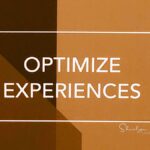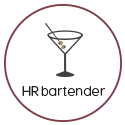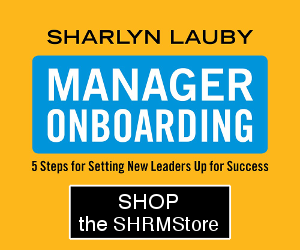Estimated reading time: 6 minutes
(Editor’s Note: Today’s article is brought to you by Censia, whose talent intelligence platform helps organizations find the talent most likely to succeed while simultaneously reducing bias. Check out this video of Censia CEO Joanna Riley talking about “The New Battle Ground: Employee Experience Fueling HR Innovation”. Enjoy the read!)
Workforce planning is one of the biggest challenges facing businesses today. It’s the process of determining the knowledge, skills, and abilities (KSAs) that the organization needs to be successful and then putting a plan together to hire individuals with those skills at the right time.
What is Talent Intelligence?
Most of us have heard of business intelligence. It’s the use of technology to gather and organize large swathes of data, which can predict and recommend future business outcomes. One of the reasons that business intelligence data is so valuable is because it’s organized, easily classified, and relatively standardized. When we refer to conducting a scan or analysis of “what’s happening”, business intelligence helps organizations consider all the drivers necessary to make good decisions.
Talent intelligence is similar. It gathers billions of data points on millions of professionals and thousands of companies to identify optimal talent. Talent intelligence allows us to pull information from all those different resumé formats, various job titles and skillsets, educational accomplishments, and work experiences into a consistent, unbiased format and uses predictive analytics to extract meaningful insights. Frankly, it’s amazing that we haven’t heard more about talent intelligence sooner.
Using Talent Intelligence in Workforce Planning
So, now that we know what talent intelligence is, let’s talk about how talent intelligence leads to better workforce planning and ultimately better recruitment processes. To gain an understanding of how talent intelligence can improve the workforce planning process, I participated in a demo of Censia’s talent intelligence dashboard. During the demo, we were able to view data in several categories:
- Specific experience areas such as start-ups and industry
- Skill and competencies like software engineering
- Geography (globally)
Here’s an example of how talent intelligence data can optimize workforce planning. Let’s say we work for a retail business that’s looking to move from brick-and-mortar locations to a more online presence. They might want to use talent intelligence data to evaluate their ability to hire remote sales representatives over the next decade. That would help them develop their strategic goals and transition timeline from brick-and-mortar to online (i.e. first year 25% online, third year 40% online, sixth year 60% online, and so forth…).
Additionally, talent intelligence data can help companies identify potential skills gaps so they can be prepared to upskill and reskill employees as the business changes. However, creating the workforce plan and working the plan are two different things. Once the organization builds a workforce plan, they can use talent intelligence in the recruitment process.
Talent Intelligence Can Help Organizations Build Diverse Workforces
Regular readers of this blog know that I facilitate a Society for Human Resource Management (SHRM) seminar on talent acquisition. At one of my recent sessions, a participant asked the group “What’s the number one skill that recruiters need to have right now?” The overwhelming answer: the ability to source a diverse workforce. This should not be a surprise to anyone. Unconscious bias in talent decisions is well documented and, despite companies’ best efforts to increase diversity both in race and gender and thought, a whopping 96% of executives still have diversity, equity, and inclusion (DEI) hiring pegged as a top priority for their organizations. By using a talent intelligence system, recruiters can mitigate unconscious bias in several ways:
- It removes recruiters from the early stages of screening, which can be the most vulnerable to oversight and unconscious bias.
- It’s use of large amounts of talent data allows it to find high-potential candidates who may simply be lacking the right job title (which, let’s face it, is largely influenced by bias with women and BIPOC getting fewer promotions).
- It ensures greater compliance, as all candidates are treated the same and evaluated on data points rather than perceptions.
The result is that candidates are initially evaluated against data points rather than current employees or appearances (which includes things like physical appearance, degrees, previous company experience, etc.). According to Censia, their client organizations have seen a significant increase in the diversity of their talent pipeline, upwards of 30% in many cases.
With a talent intelligence system as part of the recruiting workflow, the organization is able to use their data to conduct passive sourcing and resume reviews. One way to think of talent intelligence is as a bridge between workforce planning and recruitment. Talent intelligence gives teams instant expertise that connects the strategy with the execution.
Talent Intelligence Helps Organizations Identify the Best Employees
We often talk about how technology benefits organizations. And it’s true. But it also benefits candidates in a way that we don’t often talk about. Today’s technology has made it increasingly fast and easy for applicants to submit multiple applications, often congesting ATS pipelines with unqualified applicants. Organizations have to find a way to process all that information quickly, efficiently, and in an unbiased way.
Talent Intelligence takes the stress and bias potential out of the early parts of the recruitment process and frees up the time recruiting teams need to do the work that technology can’t do: connecting with candidates, evaluating their fit, building company culture, and setting new hires up for success.
P.S. Earlier in this article, I mentioned organizations might find themselves facing a skills gap. If you want to learn more about how upskilling and reskilling programs can help close existing skills gaps, then join me and the Censia team for a webinar on Tuesday, April 13, 2021 at 10a Pacific / 1p Eastern focused on “Building a Resilient Workforce Using Upskilling and Reskilling”. And if you’re already committed, sign up anyway so you can get the recording. We’d love to see you!
17








